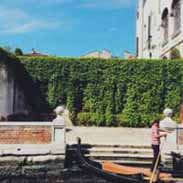Middle Ages Flashcards, test questions and answers
Discover flashcards, test exam answers, and assignments to help you learn more about Middle Ages and other subjects. Don’t miss the chance to use them for more effective college education. Use our database of questions and answers on Middle Ages and get quick solutions for your test.
What is Middle Ages?
The Middle Ages, also referred to as the Medieval Times, is a period of European history that began around the 5th century and ended in the 15th century. It was an era of great change, marked by significant social and political upheaval, economic growth, and technological advancement. During this time period, Christianity spread throughout Europe and became firmly established in many countries. Significant advances were made in agriculture; trade networks expanded; major cities developed; new forms of government arose; universities were founded; art flourished; science advanced; and literature flourished.During the Middle Ages there were a number of important events that shaped Europe’s future for centuries to come. The most notable event was probably the fall of the Roman Empire which had been ruling much of Europe since 27 BC. This left its citizens vulnerable to invasions from other groups such as Visigoths, Vandals and Huns who destroyed much of what Rome had built up over hundreds years leading to chaos across much of Western Europe. Another important event was the emergence Charlemagne who united many small kingdoms into one large empire known as Carolingian Empire during 800 AD-900 AD.. This led to a rise in cultural exchange between different regions which helped unify people politically under one ruler while at same time bringing about more efficient trading routes due to increased security along them In addition to all these changes taking place during this era, it is also worth noting some of developments seen within society itself during this period such as: Feudalism where land ownership was divided among various powerful figures with obligations being placed on each party involved (e.g., vassals providing military service); Manorialism – where peasants worked on lands owned by their lords for subsistence or rent payments ; Guild system – where craftspeople formed associations for mutual protection & benefits including regulating prices/quality goods sold etc.; Rise religious orders like monks or nuns living ascetic lifestyles devoted prayer or charity work etc . All these combined together helped shape medieval society into what would eventually become modern Europe today In conclusion ,the Middle Ages saw vast changes that still have influences our lives today although they may not be directly visible due too long passage time .
























